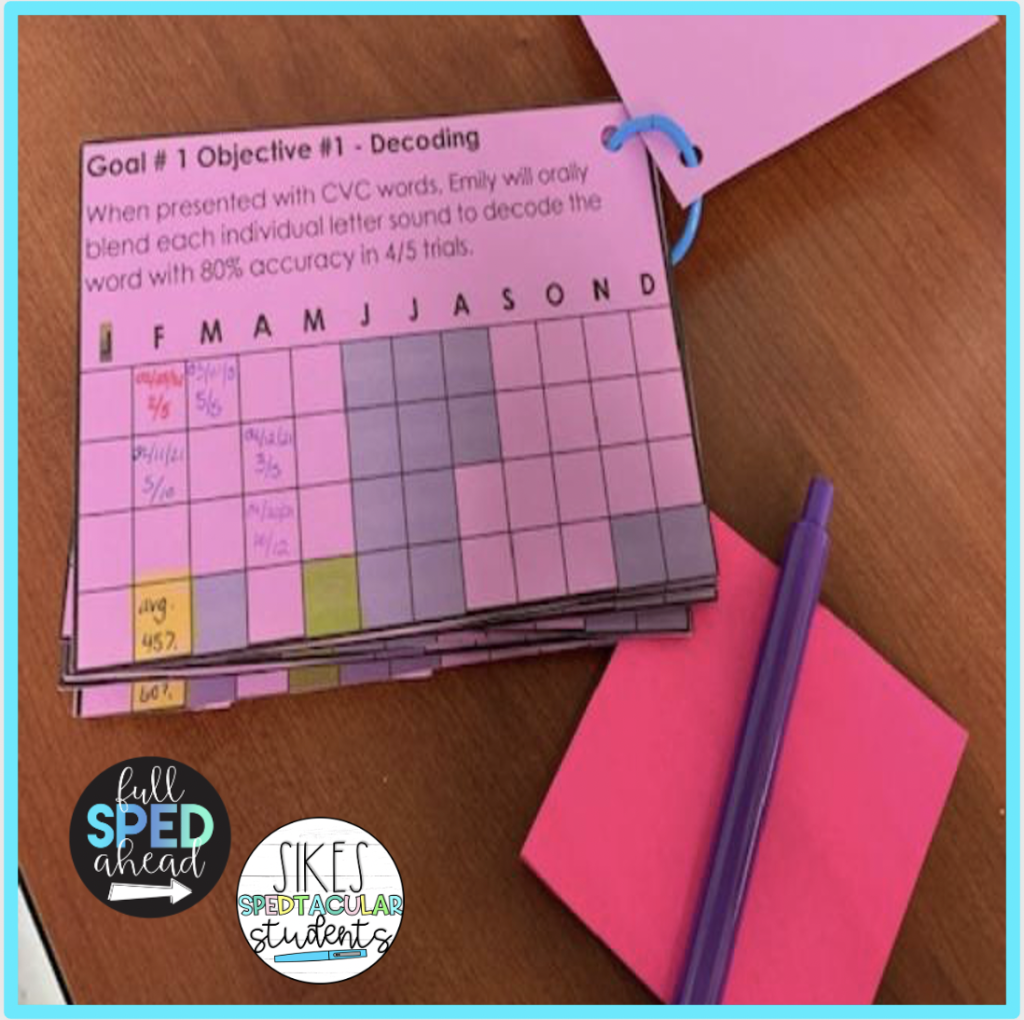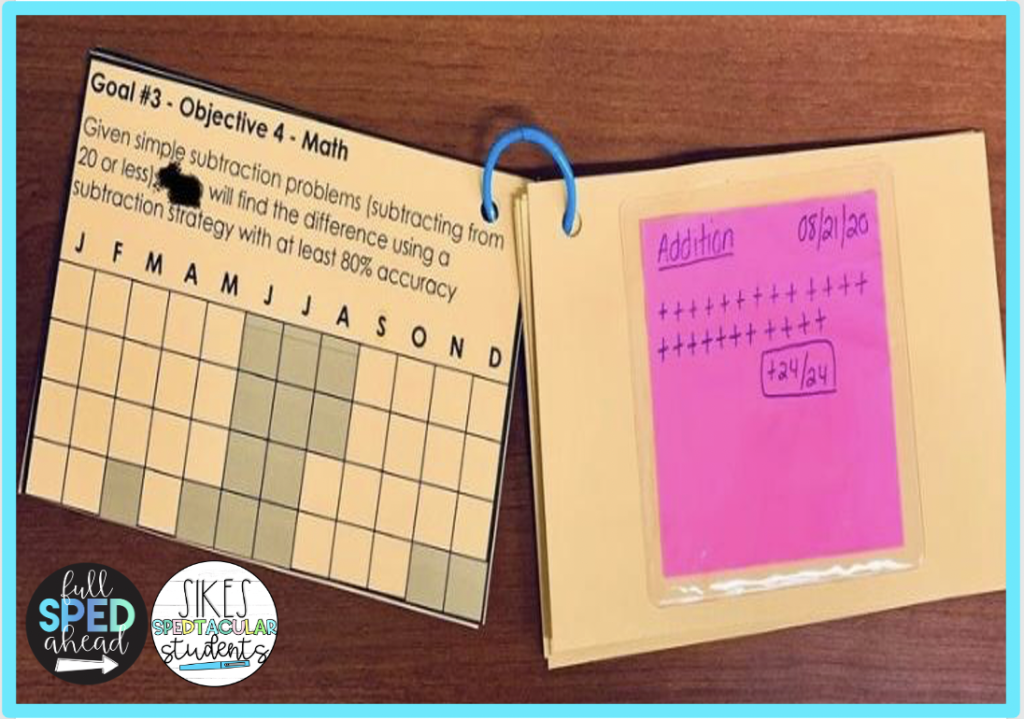I am so excited to introduce this week’s guest blogger – Rachelle from Sikes Spedtacular Students to talk all about data collection organization! If you want to know what data collection is, read this blog post!
Hello! My name is Rachelle Sikes, but you might recognize me by my brand name Sikes Spedtacular Students. I’ve been teaching special education for 9 years now, currently working as a K-2 resource teacher. Being in education (especially in special education!), you have to learn how to collect data. Data collection organization is my JAM! I’ve used different methods over the years, and want to share some of my tips on various types of data collection organization.

Data collection organization on IEP goals is essential! You have so many different options to choose from too, such as paper/digital forms and binders. This past summer, I took a course from The Intentional IEP called “Intentional Data Collection” that was a game changer!
A strategy I learned was: you create a 5×7 data card for each individual student goal and group them with a binder ring. You take your data on a post-it note and attached the post-it to your cards while recording your data! Hang them in a designated area for easy access!
You can learn more about how to complete digital data collection organization here!

I also like keeping my IEP At a Glance forms in one place in case I need a quick reference or to make a copy for a teacher without going through the hassle of logging into the computer. My district’s IEP system already made the forms, but there are many products out there you can purchase to create your own. This is a great way to maintain data collection organization.
I have also used products to help manage IEP caseloads by creating a binder which includes a calendar for meeting dates, service logs, IEPs at a glance, and parent communication forms from Mrs. D’s Corner, Charley’s Classroom, and Special Middle Scholars.
Another game changer for me was purchasing a Swingline GBC Manual Binding System and coils. It can be used to created bound books (like my IEP at a Glance book!) quickly and easily. The best part is that the coils can unclip and reclip if you need to organize or add papers. No more plastic combs! These are only a few organizational methods, but I absolutely love them and make my job a whole lot easier. I hope that you find them helpful too!
In conclusion, effective data collection organization methods are essential for special education teachers to efficiently track and analyze student progress, make data-driven decisions, and ensure individualized support for each student. By implementing systematic approaches such as digital platforms, data binders, and visual charts, teachers can streamline the data collection process and gain valuable insights into student performance and growth.
Organizing data allows teachers to easily access and review information, identify trends or patterns, and monitor student progress over time. It promotes accountability, consistency, and collaboration among educators and stakeholders involved in the student’s educational journey. Additionally, well-organized data can facilitate meaningful communication with parents and support the development of individualized education plans (IEPs) or other intervention strategies.
It is important to choose data organization methods that align with the specific needs and preferences of the teacher and the educational setting. By customizing data collection systems and utilizing technology tools, teachers can streamline administrative tasks, save time, and focus more on analyzing and using data to inform instructional practices.
What are you looking for?
COPYRIGHT © 2025 Full SPED Ahead